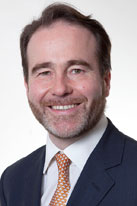Archive for November, 2012
Tuesday, November 6th, 2012

Alan Keast and Ben Adams
Local Conservative County Councillor and Deputy Leader of Staffordshire County Council, Ben Adams, attended the recent opening of Tamworth Amateur Boxing Club’s new venue and heaped praise on both the club and the new premises.
Cllr Adams said, “It was a real pleasure to join local and national supporters of Tamworth Amateur Boxing Club at the opening of their new club, education centre and gym at the CornerPost Education Centre in Orchard Street on Friday. Olympic hero Luke Campbell opened the new centre. Luke was great, it is hard to believe that someone so young, modest and polite has beaten the world’s best bantam weights to win gold.
“This club has been recognised as one of the best in the country at producing skilled boxers for some years and now has superb facilities to match their national reputation. I feel sure that the new town centre location and fantastic spaces are sure to increase membership and help the club to continue to grow.
“As a County Councillor I have a Local Community Fund which can be used to support events, clubs, charities and community groups. I like to help organisations that bring people of all ages together and provide opportunities for individuals to improve their skills, education or health whilst adding something to the community. The Tamworth Amateur Boxing Club has always come top of my list because they meet all these criteria with hundreds of men and women, juniors and seniors, coming together every week to train, keep fit and have a good time.
“Many people don’t realise that Alan Keast and his committed team also provide accredited education courses, work experience and training for young people and they are constantly looking for ways that they can work with the local authorities and voluntary sector to help Tamworth. I’d like to wish Alan and everyone involved at Tamworth Amateur Boxing Club all the best in their new premises and to say thank you for the fantastic contribution they have made to Tamworth.”
The CornerPost Education Centre is located in the former St John’s Club in Orchard Street, Tamworth.
Friday, November 2nd, 2012
I am delighted to present our October discussion brief on ‘Immigration’ (Number 8/2012). The return date for this paper is 30 November 2012 and so we need to discuss this on Monday 19th November at the RAF Club in Tamworth (The Flarepath Club 22 Lichfield Street, B79 9QD).
As with our paper on ‘Justice’ this paper has been produced in conjunction with our Justice and Home Affairs Sectoral Group, who have examined a range of issues in our immigration system. The brief, a short summary sheet, and response form are all available to download from the link on our website (CPF page).
As this is a major issue and could shape the way our Campaign goes in 2015 could I ask you to come and support this meeting and get your views across, together we can make a difference. I have included the summary sheet but please go on the site for a copy of the more indepth detail, also included are the questions that will be asked.
Overview. Net migration into the UK increased from around 50,000 per year in 1996 to just under 200,000 in 2009, reaching heights of nearly 250,000 in 2004.
Education. Study is the most common reason for moving to the UK, but student visas were used as a backdoor route into Britain under Labour. 62 per cent of all non-EU migrants entered the UK for study reasons in 2011. According to a report by the department of Business, Innovation and Skills the combined total contribution of EU and non-EU residents to Higher Education in 2008/09 was £2,292 million, or 34 per cent of the overall tuition fees contribution.
Work. Work is the second most common reason for immigration to the UK. On average, 16 per cent of all non-EU migrants come for work purposes. In order to decide who gets a visa, the Home Office categorises applications by skill level. Points are gained for criteria such as qualifications and previous experience, or through sponsorship by an employer or educational institution.
Family. In the year ending March 2012, family visas were awarded to 44,565 people or 8 per cent of the total visas awarded. The largest single group of family migrants currently originates from Asia. In 2012 non-immediate family members make up fewer than 10 per cent of all family immigration: most were children or spouses.
Asylum. In 2011 19,804 asylum applications were made to the UK. This is down from the highest point of 84,132 in 2002. Most asylum claims are rejected each year with only 5,648 asylum grants given in 2011. Asylum seekers are entitled to housing and financial support if they cannot provide it for themselves. However, housing will only be provided in areas where demand is low, and the individual will have no choice over where they live. Benefit payments are made at well below the level given to British citizens.
Global Asylum. The UK was the 8th destination worldwide for new asylum seekers in 2011. Britain is 13th worldwide in terms of total number of resident refugees, behind France, Yemen, USA, Ethiopia, China, Chad, Jordan, Kenya, Germany, Syria, Iran and Pakistan. The UK has 193,510 resident refugees and 15,170 pending cases. In 2011, developing countries hosted four fifths of the world’s refugees and the 48 least developed countries provided asylum for 2.3 million refugees.
Border Control. The budget of the UK Border Agency was £813.9 million in 2011-12. They spend around £1.5 to £2 billion each year but some of this is offset against revenues such as visa fees and fines.
Question 1
Do immigration statistics matter? Is the Government right to aim to reduce net immigration from the hundreds of thousands to the tens of thousands? Please explain your reasoning.
Question 2
If immigrants make a net fiscal contribution to the economy is it still important to limit their numbers?
Question 3
What are the key contributions (positive and negative) that immigration has made to your community?
Question 4
What are the key contributions (positive and negative) that immigration has made to your workplace?
Question 5
What kinds of immigrants do we want and who should we definitely keep out?
Question 6
How should we encourage new and existing immigrants to integrate into British society?
Question 7
How can we ensure that our immigration policy maximizes any potential economic input of migrants?
Question 8
How can the Government help public services plan for immigration?
Cllr Allan Lunn – Conservative Policy Forums Officer





